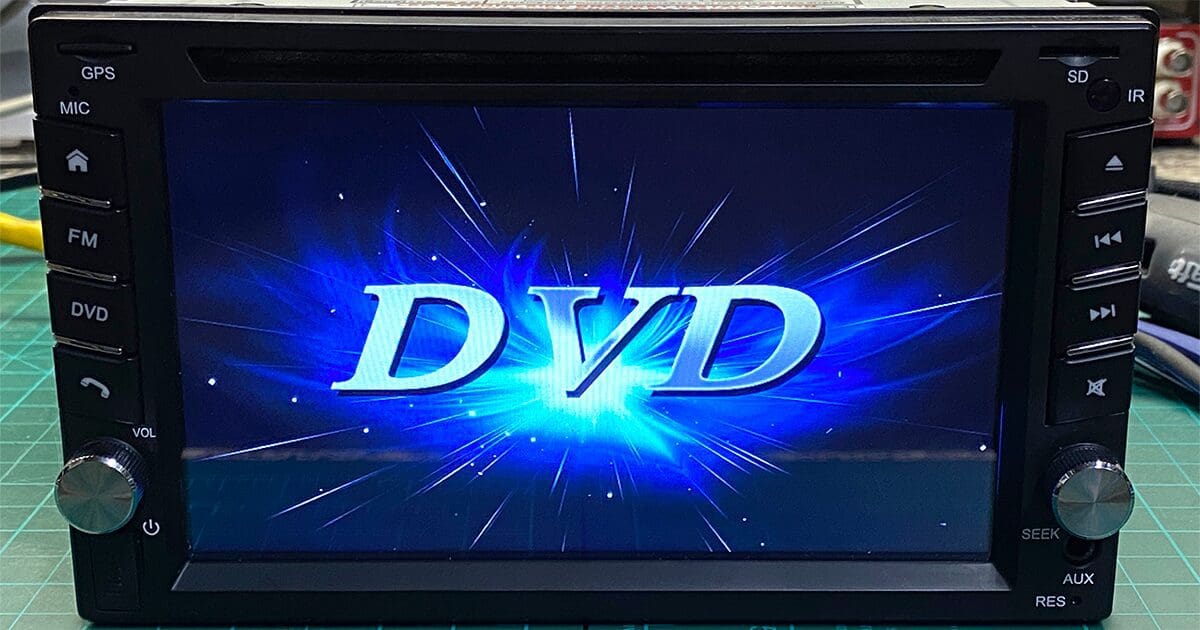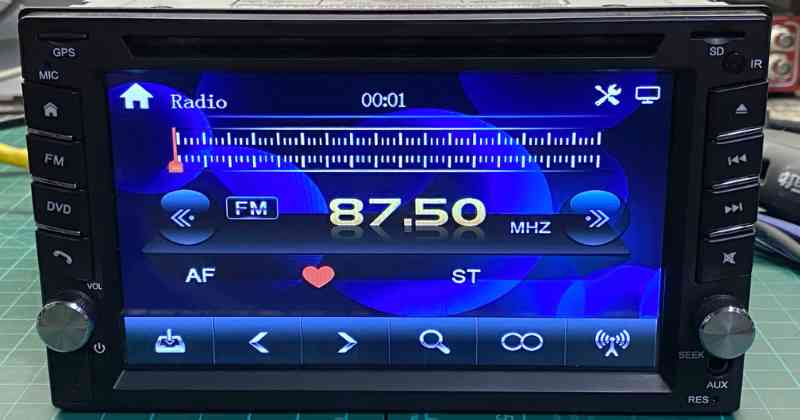Buying a new car radio has been challenging for most of 2021 and so far in 2022. The scarcity of computer chips has made picking up a name-brand radio from Sony, Kenwood, JVC, Alpine or Pioneer difficult or impossible. If you have to have a new radio in your vehicle, you’ve had two choices: wait patiently or buy a less popular option. I’ve heard good things about the short-term reliability of the B-level products. What about those genuinely cheap radios? Let’s see how one performs.
The Source of the Cheap Car Radio
My friend Cory Vaillancourt, the owner of DC Car Audio in Sarnia, Ontario, gave me a classic example of one of these inexpensive radios to check out when I was at his shop to upgrade the remote car starter in my Hyundai Genesis.
A client brought this radio to his shop for installation, and as happens with many professional mobile enhancement retailers, Cory declined the request to install it. I’ll make this clear: It isn’t about wanting to sell the customer a different radio. Currently, sometimes that isn’t even an option. When a shop installs something in your car, we often refer to it as being “married” to the product. If a new radio is a piece of junk, overheats or fails, the retailer gets caught between the vehicle owner and manufacturer of the radio to troubleshoot it. You can imagine the potential headaches. If a radio fails, the shop has to troubleshoot it, remove it from the vehicle and bench test it. If it’s broken, you have to send it back to the manufacturer or supplier for repair. Once it’s returned to you, it needs to be reinstalled, and all parties involved must pray that it was fixed properly – it often isn’t. Many shops will charge for the diagnostic time if the issue isn’t related to the installation. The same goes for the removal and reinstallation cost – that’s on you.
Thankfully, Cory had a high-quality solution for his customer when the client was in his store. As you’ll see here, Cory did him a favor. The client left this radio at the shop. While recently writing an article about distortion, I decided to see what this multimedia receiver had to offer. It had no brand on it or on its packaging. Similar radios are available from several online sources. Are they worth their modest investment, even as a stop-gap measure until something better is available? Let’s find out!
Inexpensive Radio User Interface
When I powered up this cheap radio, the first thing I noticed was that it took a little longer than I expected to display anything on the screen. I turned off the accessory lead, thinking that I had the switch backward. Nope, that didn’t do it. Flicking the switch back to the on position and some patience eventually let the radio come to life. I’d say it was about 13 seconds before the music was playing. That’s slow, especially compared with the latest name-brand models.
I connected a USB memory stick to the radio and selected the USB source option. Oddly, the radio displayed the old DVD logo while reading the memory stick. The chances are good that the radio uses the DVD transport to decode digital audio and video files instead of passing them to the main microcontroller for conversion to analog. The deck played all the typical formats – MP3, AAC, WAV, FLAC, OGG and APE – but wouldn’t recognize my WMA audio test file. It also handled AVI, MPG, MKV, MOV and XviD video formats, but not WMV or HEVC. I can understand not playing the HEVC video file, but WMV and WMA are pretty standard. When the radio can’t play a file, it skips over it and plays the next in the list rather than displaying a message about incompatibility. In the case of my testing, I had to carefully watch what was playing as the audio is the same for all my test tracks. Not a show-stopper, but not ideal either.
Here’s where things started to get weird. My test tracks are stored in subfolders on the USB stick labeled Audio and Video – nothing abnormal there. The radio stopped responding after I hit the menu button about 10 times to pick specific tracks. I could tap the touchscreen a dozen times with no response. I had to cycle power (accessory) on the deck to get it to work again. The track-up and -down response time also slowed significantly when this happened. During the hour or so I was testing the radio, it did this a few more times. It’s not a glitch; it’s a software bug. Fail!
I decided to test the tuner next. I always start by seeing whether the radio can lock on to a radio station without any antenna connected. The answer? Nope, the radio kept seeking up and wrapping around again to the bottom of the FM frequency band. Most name-brand radios can pick at least one local station without an antenna. This tells me enough about the tuner module for this article – I’m not going to waste time on a full analysis.
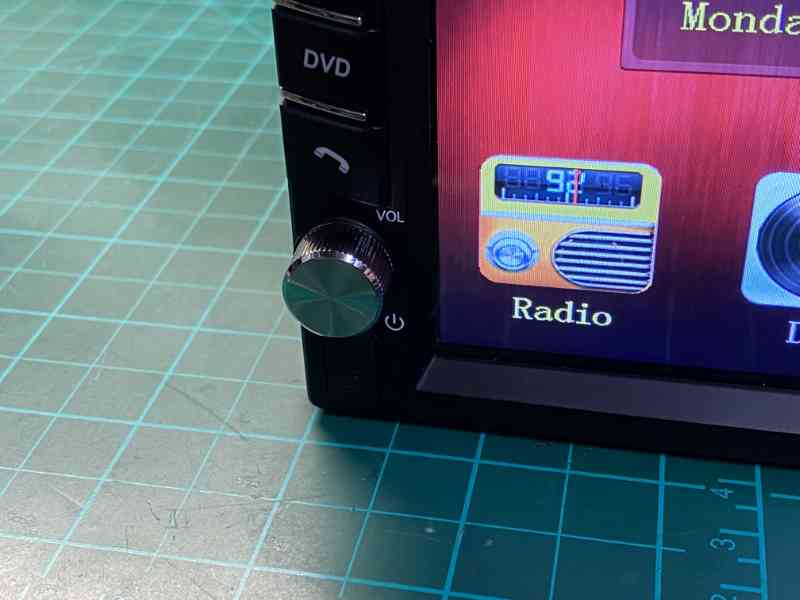
Cheap Car Radio Performance Measurements
You should have known from the start that I was going to measure the performance of this radio. Up first, let’s look at distortion. I played a 1 kilohertz 0 dB FS test tone track and measured the RCA outputs of the radio on my Quant Asylum QA403 audio analyzer. At an output level of as close to 1 volt as possible, the radio added 0.11407% total harmonic distortion and had a signal-to-noise ratio of 77.79 dB. The total harmonic distortion and noise (THD+N) at 1 kHz was 0.142%. These measurements would be considered acceptable for an entry-level radio.
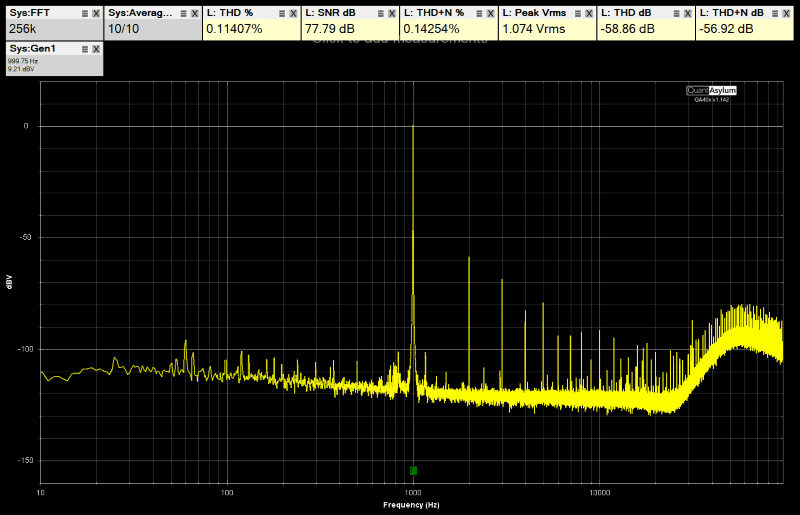
Up next, it was time to check the radio’s frequency response. Unlike most audio analyzers, the QA403 can make a frequency response measurement of a device using a digital audio file that triggers the system. This feature has been a godsend for testing radios and Bluetooth receivers. I attempted to adjust the radio’s output to try and get it as close to 0 dB as possible, but the volume control would only respond to inputs about half the time unless I wanted to turn it up two or three levels – geez! Nevertheless, here’s the frequency response of the cheap multimedia receiver.
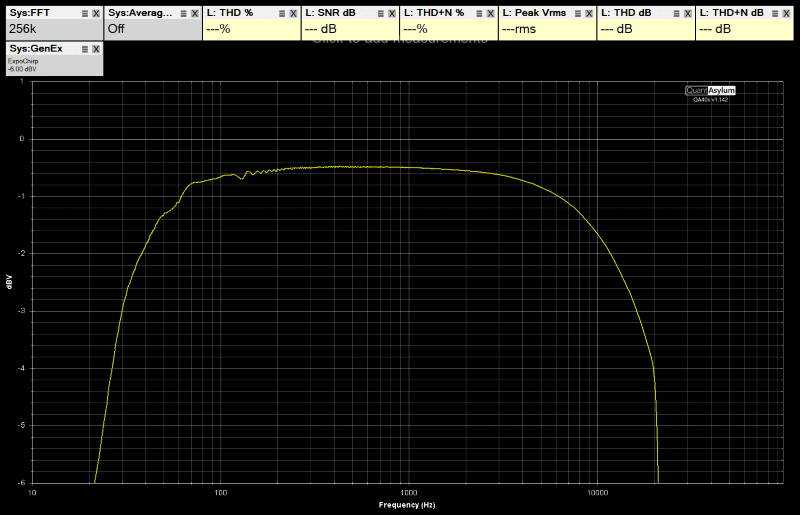
I’d call the response -3 dB at 28 hertz on the bottom end and about 18 kilohertz on the top. This is bad – really bad. The top end should be flat out to beyond 20 kHz without any attenuation, and the bass should extend below 10 Hz before it’s down 3 dB. I’ve seen this sort of issue before in a radio that used a portable navigation device processor instead of one designed for high-quality audio applications.
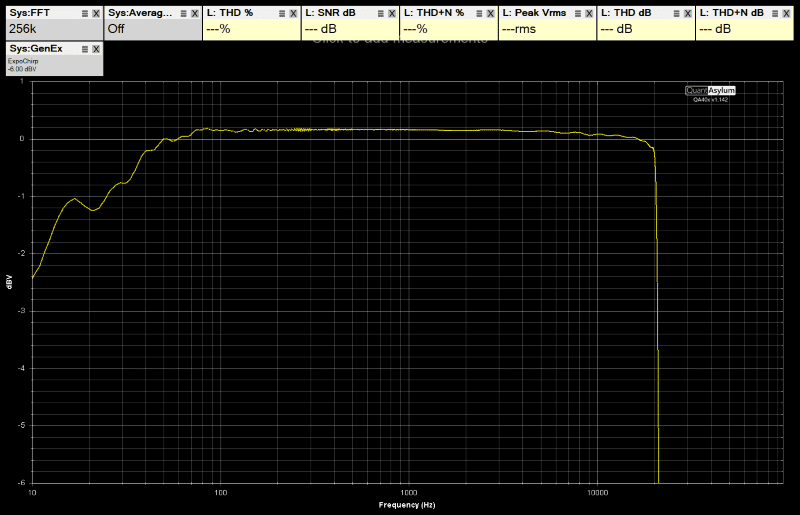
Purely for comparison, here’s the frequency response of the Sony XAV-AX7000 multimedia receiver I tested more than a year ago. This is the sort of frequency response I’d expect to see. The cheap receiver might have enough bandwidth if you listen to AM radio. With anything else, it’s going to sound dull and thin – another fail.
One last test before I give up. Let’s see how much preamp voltage the cheap radio can produce. With the 0 dB FS test track, the radio provided 2.556 volts on the front preamp outputs. This is reasonable for an entry-level deck. That’s not the end of the discussion, though. This voltage was produced with the volume at level 32 out of 40. By today’s standards, this is a significant issue. A few radios might clip the preamp outputs at the equivalent of 39 or 40, but to have it happen at just over three-quarters of full volume is an outright disaster. That’s it – I’m waving the white flag and throwing in the towel.
You Don’t Get Something for Nothing
For the five or so years before I became the editor in chief of BestCarAudio.com, I worked for one of the major Japanese head unit manufacturers. I was in charge of product development for our country and was part of the beta testing team for all new source units. I’d spend at least a week testing each model in real-world applications. Saying that I changed the radio in my car 100 times over four years isn’t even a slight exaggeration. I used to carpool with a fellow employee, and he’s changed the radio while we were on the highway home on more than one occasion. While I wasn’t able to catch every single bug or glitch, I’d often have a list of 50 or 60 items that needed to be revised before we went into production on a new model. I have friends who do this for other companies, and they report similar levels of functionality and performance feedback. A radio that distorts the preamp output at volume level 32 out of 40 would never have made it to market.
Do you ever wonder why name-brand radios often cost two or three times as much as these cheap solutions? First, the components used in manufacturing the radio are of higher quality. They have better temperature tolerances, allowing the radio to continue to function at temperatures from well below freezing to what you’d experience in Arizona in the summer. Second, the radios are tested on a vibration rig to ensure that parts don’t fly off. Third, licensing fees for Bluetooth, CD playback (called the Red Book standard) and Made for Apple are paid to the appropriate patent holders. As mentioned, the radios go through extensive testing during the electronics design and software development phase. Finally, and most importantly for you, the consumer, companies like Sony, Kenwood, JVC, Pioneer, Alpine and Stinger offer support for their products. If something isn’t right, there’s an exponentially higher chance of a software patch being released to solve the issue with a name-brand radio than with one of these inexpensive solutions. Did I mention I can’t even figure out who makes this thing?
Upgrade Your Car Stereo Wisely
I could have spent hours, if not days, picking apart this cheap car radio, but based on the short experience I had with it, it certainly didn’t deserve the time investment. A lot of consumers and people working in the car audio industry get upset when I refer to a product as junk. Maybe it’s not the best choice of words, but it certainly cuts to the chase in quantifying performance. Yep, this cheap car radio and many like it are absolute junk. While you might have to wait for inventory to be replenished, it’s still worth it to pick up a name-brand car radio from your local mobile enhancement retailer.
